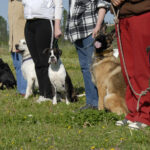3,000 delegates from around the world have gathered in Kobe Japan on the 10th anniversary of the earthquake, which killed more than 6,400 people and leveled large parts of the city, to discuss how to better prepare for natural catastrophes.
The long scheduled conference has gained new urgency in the wake of the devastating tsunamis that struck 12 countries around the Indian Ocean three weeks ago. The death toll from the disaster continues to mount with an estimated 175,000 now confirmed dead and many more thousands still missing.
The conference will focus on practical ways of warning people when a disaster threatens. This involves both high and low technology. Satellites and expensive measuring buoys and seismographs are all necessary to learn of impending catastrophes as soon as possible. But such information needs to be disseminated to the populations who are at risk in order to be effective. A warning system in the Indian Ocean along the lines of the one that has been functioning in the Pacific for the last 40 years could have saved thousands of lives. Work on implementing such a system has now become a top priority.
According to a UN report at least 2.5 billion people (more than one-third) of the world’s population) have been touched by natural catastrophes over the last 10 years – an increase of 60 percent over the previous 10 years. Asia accounts for half those casualties and 90 percent of the injured and homeless.
A BBC report noted that officials will emphasize the role of local communities in preparing warning systems, instituting safety drills, designating safety shelters and stocking up emergency supplies to cope with disasters when they occur. It will also stress the need for sturdier structures, designed to withstand earthquakes, floods, hurricanes and perhaps even tsunamis.
Editor’s note:
Although none of the reports coming from Kobe have mentioned it, a good way to prevent death and destruction from natural disasters is to build structures away from the most dangerous places – the seashore, fault lines and flood plains – to start with. The insurance industry has increasingly recognized that putting yourself in harm’s way increases the risk that harm will arrive. It may mean a longer walk to the beach or the port, but if it saves lives it would be worth it.
Was this article valuable?
Here are more articles you may enjoy.


 Florida Public Adjuster, Renter Charged With Filing Claim on Rental Home
Florida Public Adjuster, Renter Charged With Filing Claim on Rental Home  Trump’s Bond Insurer Tells Judge Shortfall Is ‘Inconceivable’
Trump’s Bond Insurer Tells Judge Shortfall Is ‘Inconceivable’  US Dog-Related Injury Claims Hit $1.12 Billion in 2023: Triple-I, State Farm Report
US Dog-Related Injury Claims Hit $1.12 Billion in 2023: Triple-I, State Farm Report  Vintage Ferrari Owners’ Favorite Mechanic Charged With Theft, Fraud
Vintage Ferrari Owners’ Favorite Mechanic Charged With Theft, Fraud 

